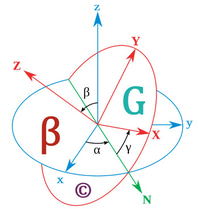Understanding Ohm’s Law: The Foundation of Electrical Engineering
If you’re studying or working in electrical engineering, you’ve likely encountered Ohm’s Law. It’s one of the most fundamental principles in the field, forming the backbone of circuit analysis and design. But what exactly is Ohm’s Law, and why is it so important? In this blog, we’ll break down Ohm’s Law, explore its applications, and show you how it’s used in real-world electrical engineering projects.
ELECTRICAL ENGINEERINGSUSTAINABILITYENERGY
Engr. Benjamin V. Gonzales Jr.
6/6/20252 min read
What is Ohm’s Law?
Ohm’s Law is a simple yet powerful equation that describes the relationship between voltage (V), current (I), and resistance (R) in an electrical circuit. It states:
V = I × R
Where:
V is the voltage across the circuit (measured in volts, V).
I is the current flowing through the circuit (measured in amperes, A).
R is the resistance of the circuit (measured in ohms, Ω).
Why is Ohm’s Law Important?
Ohm’s Law is essential because it allows engineers to:
Analyze Circuits: Calculate voltage, current, or resistance when the other two values are known.
Design Circuits: Determine the appropriate components for a circuit to function as intended.
Troubleshoot Problems: Identify issues like short circuits, open circuits, or incorrect component values.
Practical Applications of Ohm’s Law
Ohm’s Law is used in countless real-world applications. Here are a few examples:
1. Calculating Current in a Circuit
Scenario: You have a 12V battery connected to a resistor with a resistance of 4Ω. What is the current flowing through the circuit?
Solution: Using Ohm’s Law, I = V / R = 12V / 4Ω = 3A.
2. Determining Resistance
Scenario: A circuit has a voltage of 9V and a current of 0.5A. What is the resistance?
Solution: Using Ohm’s Law, R = V / I = 9V / 0.5A = 18Ω.
3. Designing a Voltage Divider
Scenario: You need to create a voltage divider circuit to provide 3V from a 9V battery. How do you choose the resistors?
Solution: Using Ohm’s Law and the voltage divider formula, you can calculate the required resistor values.
Ohm’s Law in Real-World Projects
Ohm’s Law isn’t just a theoretical concept—it’s used in practical electrical engineering projects every day. Here are some examples:
1. LED Circuit Design
Application: When designing an LED circuit, Ohm’s Law helps determine the resistor needed to limit the current and prevent the LED from burning out.
Example: If an LED requires 2V and 20mA (0.02A) and is powered by a 5V source, the resistor value is calculated as R = (5V - 2V) / 0.02A = 150Ω.
2. Power Supply Design
Application: Ohm’s Law is used to calculate the current draw of a device and ensure the power supply can handle the load.
Example: A device with a resistance of 50Ω connected to a 10V power supply draws I = 10V / 50Ω = 0.2A.
3. Heating Elements
Application: Ohm’s Law helps design heating elements by calculating the resistance needed to achieve a specific power output.
Example: A 100W heating element operating at 120V requires a resistance of R = V² / P = (120V)² / 100W = 144Ω.
Common Mistakes When Using Ohm’s Law
While Ohm’s Law is straightforward, there are some common pitfalls to avoid:
Assuming Ohm’s Law Applies Everywhere: Ohm’s Law only applies to ohmic materials, which have a linear relationship between voltage and current. Non-ohmic devices, like diodes, don’t follow Ohm’s Law.
Ignoring Units: Always use consistent units (volts, amperes, ohms) to avoid calculation errors.
Overlooking Circuit Complexity: In complex circuits, Ohm’s Law must be combined with other principles, like Kirchhoff’s Laws, for accurate analysis.
The Future of Ohm’s Law
While Ohm’s Law has been around for nearly 200 years, it remains as relevant as ever. As electrical engineering evolves with new technologies like AI, IoT, and renewable energy, Ohm’s Law continues to serve as a foundational tool for understanding and designing electrical systems.
Conclusion
Ohm’s Law is more than just a formula—it’s the foundation of electrical engineering. Whether you’re designing a simple LED circuit or analyzing a complex power system, understanding Ohm’s Law is essential. By mastering this fundamental principle, you’ll be well-equipped to tackle a wide range of electrical engineering challenges.





